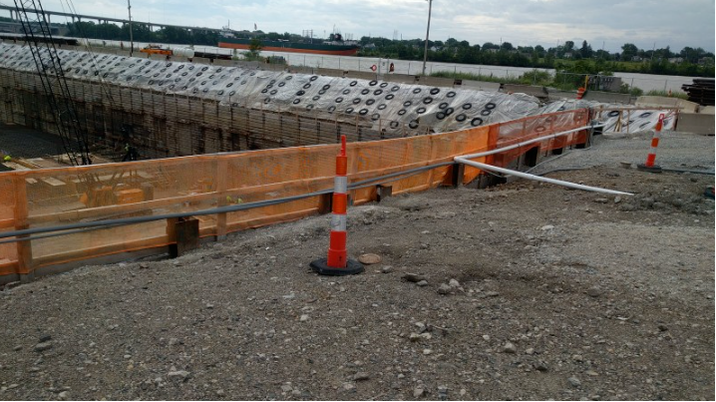Leading Consulting Civil Engineering Companies for Framework Projects
Leading Consulting Civil Engineering Companies for Framework Projects
Blog Article
Just How Consulting Engineers Enhance Geotechnical Design Projects: Insights Into Their Expertise, Techniques, and Collaborative Approaches
Consulting designers are critical in improving geotechnical design tasks, applying their specialized knowledge to browse the intricacies of subsurface problems. Their joint methods foster communication amongst varied task stakeholders, eventually forming the job's trajectory.
Function of Consulting Engineers
The proficiency of getting in touch with engineers in geotechnical design is essential to the successful implementation of building projects. These professionals play a critical duty in evaluating dirt and rock homes, which are crucial aspects influencing design and building and construction choices. By conducting thorough site examinations, seeking advice from engineers gather crucial data that notifies the design procedure, making sure jobs are improved steady and ideal ground.
Consulting designers additionally supply indispensable understandings right into danger monitoring (geotechnical geologist). They recognize prospective geotechnical risks, such as landslides, soil liquefaction, and settlement concerns, enabling stakeholders to execute efficient mitigation approaches. Their experience help in optimizing structure designs, which can cause significant price savings and enhanced safety and security
In addition, seeking advice from engineers work as a vital web link in between task proprietors, architects, and contractors. Their capability to translate complex geotechnical information right into workable referrals cultivates partnership and assists in informed decision-making throughout the project lifecycle. This multidisciplinary method not only improves task efficiency but additionally makes certain conformity with regulative standards and best methods.
Secret Techniques in Geotechnical Design

One primary approach is site examination, which includes conducting field tests and lab evaluations to collect information on subsurface problems. Strategies such as Requirement Infiltration Screening (SPT) and Cone Infiltration Screening (CPT) are extensively used to evaluate dirt stratigraphy and toughness. Furthermore, geophysical methods, including seismic and electric resistivity studies, offer non-invasive methods to evaluate subsurface qualities.
Another crucial methodology is mathematical modeling, which enables engineers to imitate numerous circumstances and anticipate exactly how soil-structure communications will certainly act under different loading problems. Limited Element Analysis (FEA) is an usual strategy employed in this context.
Additionally, the style of foundations, keeping structures, and earthworks depends heavily on these methods - geotechnical geologist. By incorporating advanced logical tools with field data, consulting designers can establish tailored remedies that deal with details job challenges, eventually adding to the stability and security of construction jobs
Importance of Dirt Evaluation
Soil analysis acts as a fundamental element in geotechnical design, offering essential understandings right into the physical and chemical homes of soil essential for efficient building and construction planning. Comprehending dirt attributes is essential for establishing its load-bearing capacity, drainage habits, and potential for settlement or instability. In-depth dirt investigations, consisting of tasting and research laboratory screening, help identify specifications such as soil type, moisture material, thickness, and shear stamina.
These evaluations educate the option of proper construction strategies and materials, inevitably affecting project security and long life. For example, cohesive dirts might require various foundation designs contrasted Click This Link to granular soils, demanding customized engineering services. In addition, soil analysis help in determining impurities that might position dangers to human health or the environment, permitting the growth of mitigation methods.
Incorporating dirt evaluation into the early stages of job growth aids to reduce unanticipated difficulties, making certain that designers can prepare for and attend to potential problems prior to they intensify. By developing a thorough understanding of the website problems, getting in touch with designers can enhance style efficiency and minimize expenses, thus improving the general success of geotechnical design tasks.
Collaborative Methods in Tasks
Successful geotechnical tasks frequently rest on joint techniques that unite varied competence from different disciplines. Effective partnership amongst seeking advice from designers, geologists, ecological researchers, and building and construction professionals is essential for resolving complex obstacles click to read and optimizing task results. By leveraging the special abilities and expertise of each employee, tasks can gain from a holistic understanding of the website problems, regulative requirements, and engineering restrictions.
Routine interaction and interdisciplinary meetings promote the sharing of understandings and promote a society of teamwork. These joint initiatives enable the recognition of prospective threats early in the job lifecycle, enabling timely reduction approaches. Incorporating comments from stakeholders, including regional areas and governing companies, ensures that all perspectives are thought about, enhancing job approval and conformity.
Additionally, the integration of innovative technologies, such as Geographic Information Solution (GIS) and Building Info Modeling (BIM), further boosts cooperation. These devices permit for the real-time sharing of data and visualization of geotechnical problems, promoting notified decision-making. Eventually, a joint strategy not just enhances project implementation yet also lays the structure for ingenious services to complex geotechnical engineering obstacles.
Influence on Task Outcomes

Consulting engineers employ sophisticated techniques such as danger assessment and predictive modeling, which boost the precision of job projections. Their ability to integrate innovative technologies, like geotechnical instrumentation and data analytics, further improves the layout and building procedures. Therefore, jobs experience visit here improved performance, minimized expenses, and reduced delays.
In addition, cultivating reliable interaction and collaboration among employee boosts problem-solving capabilities. When obstacles occur, a united front permits speedy recognition of solutions, protecting against possible obstacles. Eventually, the collaborative efforts of consulting engineers contribute to greater high quality outcomes, guaranteeing that tasks meet both governing criteria and client expectations.
Final Thought

Report this page